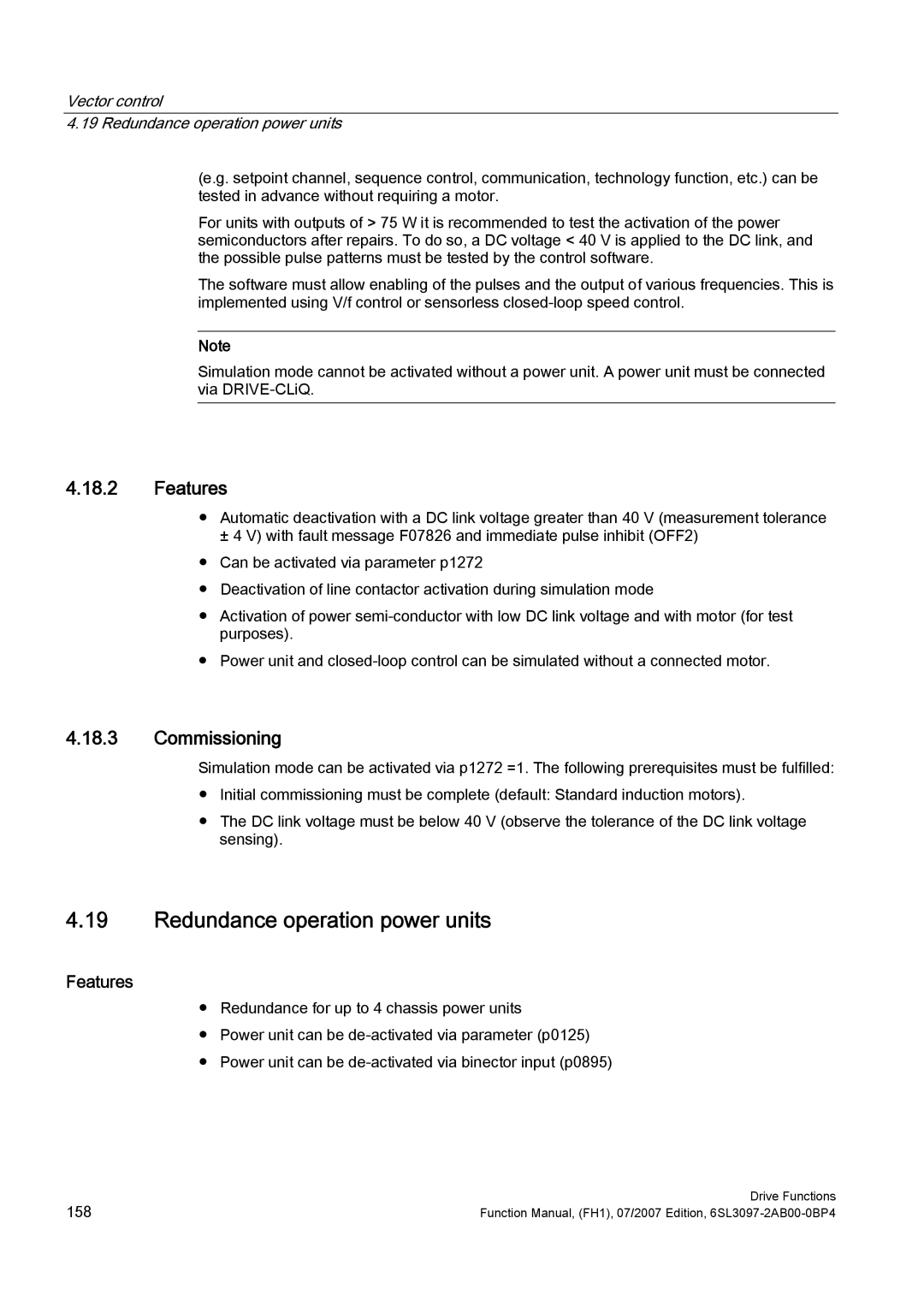
Vector control
4.19 Redundance operation power units
(e.g. setpoint channel, sequence control, communication, technology function, etc.) can be tested in advance without requiring a motor.
For units with outputs of > 75 W it is recommended to test the activation of the power semiconductors after repairs. To do so, a DC voltage < 40 V is applied to the DC link, and the possible pulse patterns must be tested by the control software.
The software must allow enabling of the pulses and the output of various frequencies. This is implemented using V/f control or sensorless
Note
Simulation mode cannot be activated without a power unit. A power unit must be connected via
4.18.2Features
●Automatic deactivation with a DC link voltage greater than 40 V (measurement tolerance
± 4 V) with fault message F07826 and immediate pulse inhibit (OFF2)
●Can be activated via parameter p1272
●Deactivation of line contactor activation during simulation mode
●Activation of power
●Power unit and
4.18.3Commissioning
Simulation mode can be activated via p1272 =1. The following prerequisites must be fulfilled:
●Initial commissioning must be complete (default: Standard induction motors).
●The DC link voltage must be below 40 V (observe the tolerance of the DC link voltage sensing).
4.19Redundance operation power units
Features
●Redundance for up to 4 chassis power units
●Power unit can be
●Power unit can be
158 | Drive Functions |
Function Manual, (FH1), 07/2007 Edition, |
